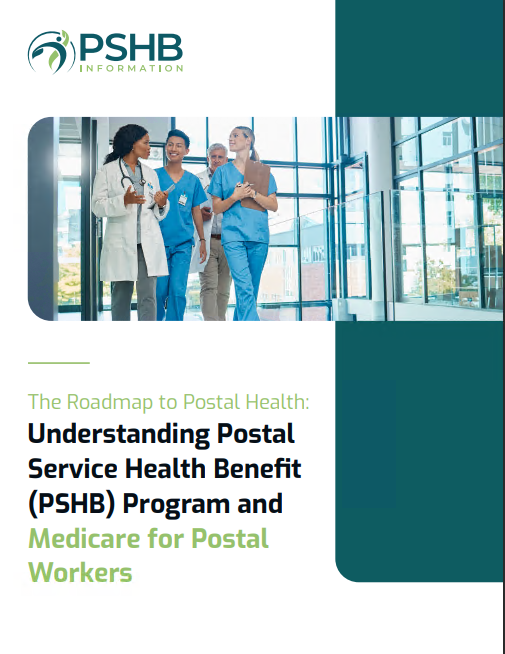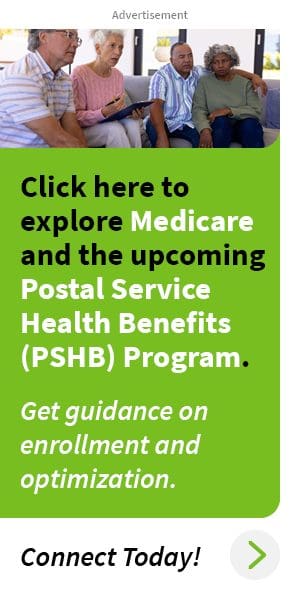Key Takeaways:
-
Making the most of your Postal Service Health Benefits (PSHB) plan involves understanding coverage options, timelines, and eligibility requirements.
-
Medicare integration plays a significant role in PSHB plans for retirees, so carefully consider enrollment in Part B and its associated benefits.
Navigating 2025 PSHB Plans: Start Here
If you’re part of the Postal Service community, the Postal Service Health Benefits (PSHB) program has officially replaced the Federal Employees Health Benefits (FEHB) program for employees and annuitants. Knowing the ins and outs of these new plans in 2025 is crucial to ensuring you have the right coverage for yourself and your family. From enrollment deadlines to coordination with Medicare, there’s a lot to consider. Let’s break it down to help you make the best decision this year.
Understanding Your PSHB Options
PSHB offers a variety of plans designed to meet diverse healthcare needs. These plans maintain the comprehensive coverage you may be familiar with under FEHB but are tailored specifically for Postal Service employees, retirees, and eligible family members.
What’s Included in PSHB Plans
-
Core Medical Coverage: Doctor visits, hospital stays, preventive care, and specialist consultations are covered.
-
Prescription Drug Benefits: Coverage for medications is included, with varying copayments or coinsurance depending on the plan.
-
Supplemental Benefits: Many plans offer additional benefits like vision, dental, and hearing services.
How PSHB Plans Differ
Compared to FEHB plans, PSHB plans are aligned with the unique needs of Postal Service members. Premiums, cost-sharing structures, and Medicare integration for retirees are key aspects that differentiate these plans.
Enrollment Periods and Eligibility
Staying informed about enrollment timelines and eligibility requirements ensures you don’t miss out on essential coverage.
Open Season
The annual Open Season runs from November 11 to December 9. During this period, you can enroll in or switch PSHB plans, add or remove family members, or make other changes to your coverage. Any changes you make during Open Season take effect on January 1.
Special Enrollment Periods (SEPs)
You may qualify for a Special Enrollment Period if you experience a Qualifying Life Event (QLE), such as marriage, divorce, the birth of a child, or a significant change in employment status. SEPs allow you to adjust your PSHB plan outside of Open Season.
Automatic Enrollment
If you were enrolled in an FEHB plan in 2024 and did not make changes during Open Season, you are automatically enrolled in the corresponding PSHB plan for 2025. However, reviewing your coverage is always a good idea to ensure it still meets your needs.
Medicare Integration: A Game Changer for Retirees
For Medicare-eligible Postal Service retirees and family members, understanding how PSHB plans coordinate with Medicare is essential. Medicare integration enhances coverage and can reduce out-of-pocket costs.
Enrollment in Medicare Part B
Most Medicare-eligible retirees are required to enroll in Part B to maintain PSHB coverage. Part B covers outpatient services, such as doctor visits and preventive care, complementing your PSHB plan. Exceptions to this requirement include retirees who were already retired before January 1, 2025, and employees who were aged 64 or older as of the same date.
Benefits of Medicare Coordination
-
Lower Out-of-Pocket Costs: Many PSHB plans waive deductibles and coinsurance for retirees enrolled in Medicare Part B.
-
Prescription Drug Coverage: Retirees are automatically enrolled in a Medicare Part D Employer Group Waiver Plan (EGWP), simplifying access to medications.
-
Additional Perks: Some plans may offer Part B premium reimbursements or other financial incentives.
Evaluating Costs and Coverage
When selecting a PSHB plan, comparing costs and benefits is crucial to ensure you get the most value.
Premiums and Cost-Sharing
While premiums vary by plan, most offer competitive rates compared to private-sector plans. Keep an eye on copayments, coinsurance, and deductibles, as these can significantly impact your overall healthcare spending.
Out-of-Pocket Maximums
Each PSHB plan includes an annual out-of-pocket maximum, which caps the amount you pay for covered services in a year. For retirees, this cap can be especially beneficial when combined with Medicare.
Key Considerations for Families
PSHB plans cover eligible family members, but it’s important to review who qualifies and the best way to maximize coverage for everyone.
Who Is Eligible?
-
Spouses: Current spouses of Postal Service employees or annuitants.
-
Children: Biological, adopted, stepchildren, and foster children under specific age limits.
-
Disabled Dependents: Adult children who are incapable of self-support due to a disability.
Coordinating Coverage
If you and your spouse both have access to health benefits, compare plans to determine which offers the best value for your family. Consider factors like premiums, network access, and benefits for dependents.
Planning for the Long Term
Healthcare needs evolve over time, and your PSHB plan should keep pace with those changes. Regularly reassessing your coverage can help you avoid gaps or surprises.
Annual Review
During Open Season, take time to review your current plan. Look for updates in premiums, benefits, and cost-sharing that might affect your choice.
Life Changes
Significant life events, like retirement or changes in family size, may require adjustments to your PSHB plan. Don’t hesitate to explore new options when these events occur.
Resources for Informed Decisions
Making the right choice requires access to accurate information. Use these resources to help guide your decision-making process:
-
Plan Comparison Tools: Online tools provided by the PSHB program make it easy to compare plans side by side.
-
Annual Notice of Change (ANOC): Review this document to stay informed about changes to your plan’s premiums, benefits, and cost-sharing.
-
Customer Support: Contact your plan’s customer service team with specific questions about coverage or benefits.
Staying Ahead in 2025
The transition to PSHB plans marks a significant change for the Postal Service community. By staying informed and proactive, you can make the most of these benefits while ensuring your health and financial needs are met.
Prioritize Your Health
Selecting the right plan is about more than just costs; it’s about ensuring access to the care you need. Consider your health history, anticipated medical needs, and any specialist care you may require.
Don’t Miss Deadlines
Whether it’s Open Season, Medicare enrollment, or a Special Enrollment Period, meeting deadlines is crucial to maintaining uninterrupted coverage.
Seek Expert Advice
If you’re unsure about your options, consulting with a benefits advisor or HR representative can help clarify your choices and guide you toward the best decision.
Your Path to the Right PSHB Plan in 2025
Choosing the best PSHB plan this year can feel overwhelming, but a clear understanding of your options, costs, and timelines makes it manageable. Stay informed, prioritize your needs, and don’t hesitate to seek assistance when needed. Your health and peace of mind are worth the effort.





